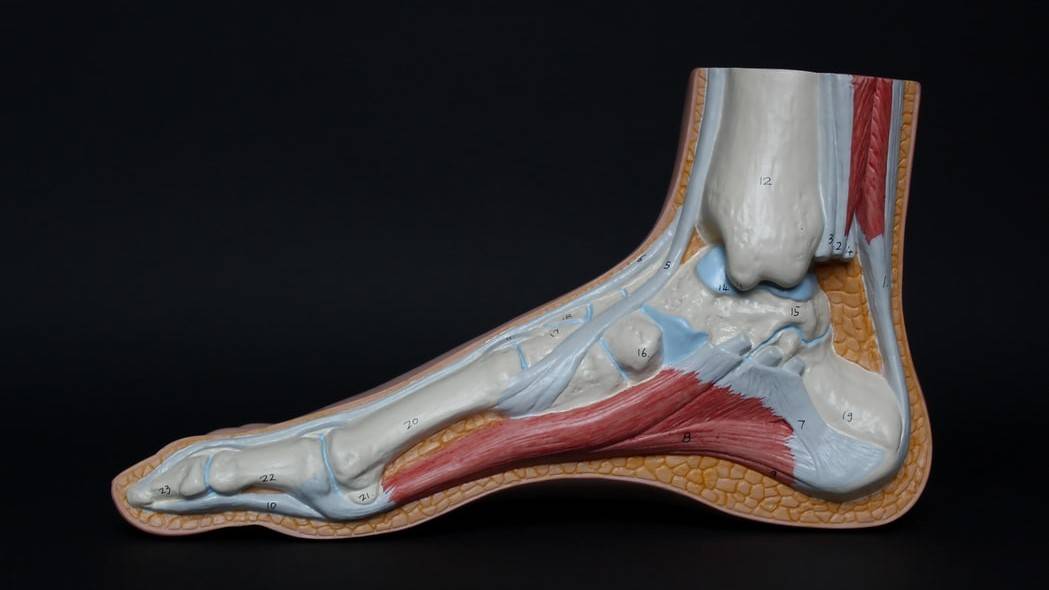The Greek demigod Achilles must have been a runner - because his sore spot was the Achilles tendon, which was named after him. This weakness had reasons other than running – but mythology aside, Achilles could be the prototype of the modern triathlete: physically strong, well trained – but the Achilles tendon makes him vulnerable.
The Achilles tendon: Always busy
The Achilles tendon is the thickest tendon in the body and has to transmit and endure the greatest forces. It occurs when the soleus muscle and calf twin muscle come together and begins at the heel bone. It transmits the force of the calf muscles to the bone. She does this every day, over and over again - when we get up, walk and exercise.
At some point, however, it can also become too much for the super tendon: If we subject the Achilles tendon to too much action, its strength can become a weakness. Due to its thickness, it also has less blood flow than many other tissues and is therefore less able to regenerate.
Above all, too much action means: jumping, quick changes of direction, permanent high stress, little breaks. Runners, athletes and track and field athletes are therefore most often affected by pain or even tears in this area.
Pain: When the Achilles tendon turns into an Achilles heel
The Achilles tendon initially shows little sign of being overloaded. The smallest injuries in the less elastic tendon heal only slowly - and the Achilles tendon has to keep working, training and functioning. The micro-traumas are not given time to heal. At some point they become inflamed – then the pain also comes. If the tendon is still not given time to regenerate, scars will form that make the tendon even less elastic.
The so-called "start-up pain" is particularly characteristic: the pain is greatest immediately after getting up. The mobility of the ankle is restricted, the calf muscles harden. If the tendon is severely inflamed, reddening occurs and inflammation and scars form noticeable adhesions. The pain is often most severe further down on the heel bone.
If we still don't give the Achilles tendon enough rest, the symptoms can become chronic. In the most extreme case, the tendon can even tear - this usually happens suddenly with a whip-like bang.
Shortened, tense, overloaded: the causes of pain
The causes for overloading the Achilles tendon and the subsequent pain are varied - but they are also well known. As with so many triathlon-specific injuries, the focus is on the following factors: overtraining, footwear, and muscular imbalances.
Our movements always come about through the complex interaction between muscles, tendons and bones. If a component in this interaction is too weak or does not work as it should, the system will be overloaded in the long run:
- Shortened or weak calf muscles put enormous strain on the Achilles tendon with every step.
- Malpositions such as hollow feet, flat feet and splayfeet or bowlegs and knock knees mean stress for the tendon as well as worn shoes that are too old.
- Too little training break or too rapid increase in load lead to overtired muscles and too little regeneration time.
- Increased speed training on the track or running off-road also takes some getting used to for the tendon.
- Warming up and cooling down as well as stretching and athletic training are often neglected - tendons and muscles are not prepared for the strain and are not supported enough during regeneration.
- A sudden change in technique, eg to walking with the forefoot, overtaxes the muscles and tendons.
Of course, the causes of complaints are complex and very individual. But the pain is proof that something is wrong. It is important to find out what we should improve.
Treatment of Achilles tendon problems
There is enough time to investigate the causes during the training break, which is necessary due to the symptoms. Most triathletes and runners don't take the pain seriously enough at first and continue to train - making the pain worse.
The break usually comes too late: if the pain persists for more than two weeks, a doctor should be consulted. A break of at least six weeks is expected to give the poorly supplied tendon enough time to recover.
The doctor also decides whether ointments or anti-inflammatory agents are used. You can help by cooling the painful areas - 15-20 minutes with an ice pack is enough to calm the pain and stimulate blood circulation.
You should only start running again when you can run and jump completely pain-free.
prevention
It doesn't matter whether you haven't had any Achilles tendon problems yet or are just returning from a break in training because of it: You can relatively easily eliminate or alleviate the above causes and thus prevent Achilles tendon problems.
- Invest in good and, above all, suitable footwear. Insoles may be necessary to correct misalignments.
- Slowly increase the training load.
- Get your structures used to speed training and cross-country runs, as well as to technical changes.
- Stretching and strengthening the calf and foot muscles should be an integral part of the workout.
- Don't forget to warm up and cool down!




















